Regenerative Medicine’s Future: Exosome Therapy
Health and youth are things we all strive to maintain and/or restore at least in some ways. As a result of medical advances, people can regain physical appearance that has been altered by illness, trauma, or aging in drastic and subtle ways. A way to achieve positive outcomes without invasive procedures would be even better. Exosome therapy harnesses the power of products from cells that produce new tissues to develop new treatments.
Exosome Therapy can be used in the following areas for medical aesthetics:
- Enhance collagen and elastin levels in the skin
- Preventing hair loss
- Reduce scar appearance
- Getting rid of acne
- Reduce the appearance of sagging skin
- Achieve a youthful appearance by reducing wrinkles and age spots
How do exosomes play a role in regenerative medicine?
Different from stem cells, exosomes are nanoparticles that are snipped off from cells in the form of vesicles. Each vesicle contains a rich source of protein, DNA, and RNA. The vesicles can be taken up by distant cells and affect their function. The exosomes released by all cell types play an important role in regenerative medicine since they facilitate healing and repair.
Aside from drug delivery, exosome therapy involves regenerative and restorative measures for treating conditions such as tissue injury, osteoarthritis, chronic inflammation, fibromyalgia, degenerative diseases, and even cancer. Due to their regenerative capabilities, exosomes are also used in medical aesthetics.
The use of exosome therapy in facial aesthetics and hair restoration has been demonstrated in research.
Aesthetic applications of exosomes
Exosomes derived from stem cells can be used by doctors for skin reconstruction. A significant increase in collagen and elastin can be achieved by using exosomes. As a result, scars can become less noticeable, irritation can be reduced, acne can be treated, sagging skin can be addressed, and wrinkles and age spots can be reduced. Microneedling with exosomes is one-way exosomes can be used in a facial procedure. The exosomes diffuse over the skin’s outer layers, releasing growth factors that enhance wound healing and tissue remodeling.
Studies have shown that exosomes can be successfully used in hair restoration in addition to skin improvement. Unlike other treatments for alopecia (hair loss), exosome therapy (Regenerative Medicine) promotes hair growth without adverse effects. Exosomes are injected into the scalp and are delivered to the dermal papillae, which are located at the bottom of hair follicles.
The use of exosomes in medical therapeutics is expanding as more is learned about these powerful biologics, as well as their successful and minimally invasive applications in medical aesthetics.
For Appointment Call Now:
Gulberg Clinic: 0333-4142045
DHA Phase 4 Clinic: 0335 4454303 / 0333-4666120
FAQ’S
2. Is it Painful?
Targeted area will be numbed before procedure so it’s not painful at all.
3. What is the down time?
Minimal to no downtime
4. How much time is required for the procedure?
If appointment is pre-booked then 60-90 Minutes.
5. For How long does it remains effective?
Manufacturers claim it is effective for a year.
6. Are there any side effects of Exosome Treatment?
None to date. If procedures are done by a qualified and competent person in a safe environment with necessary precautions.





1 Comment
Razia
Charges for exosomes